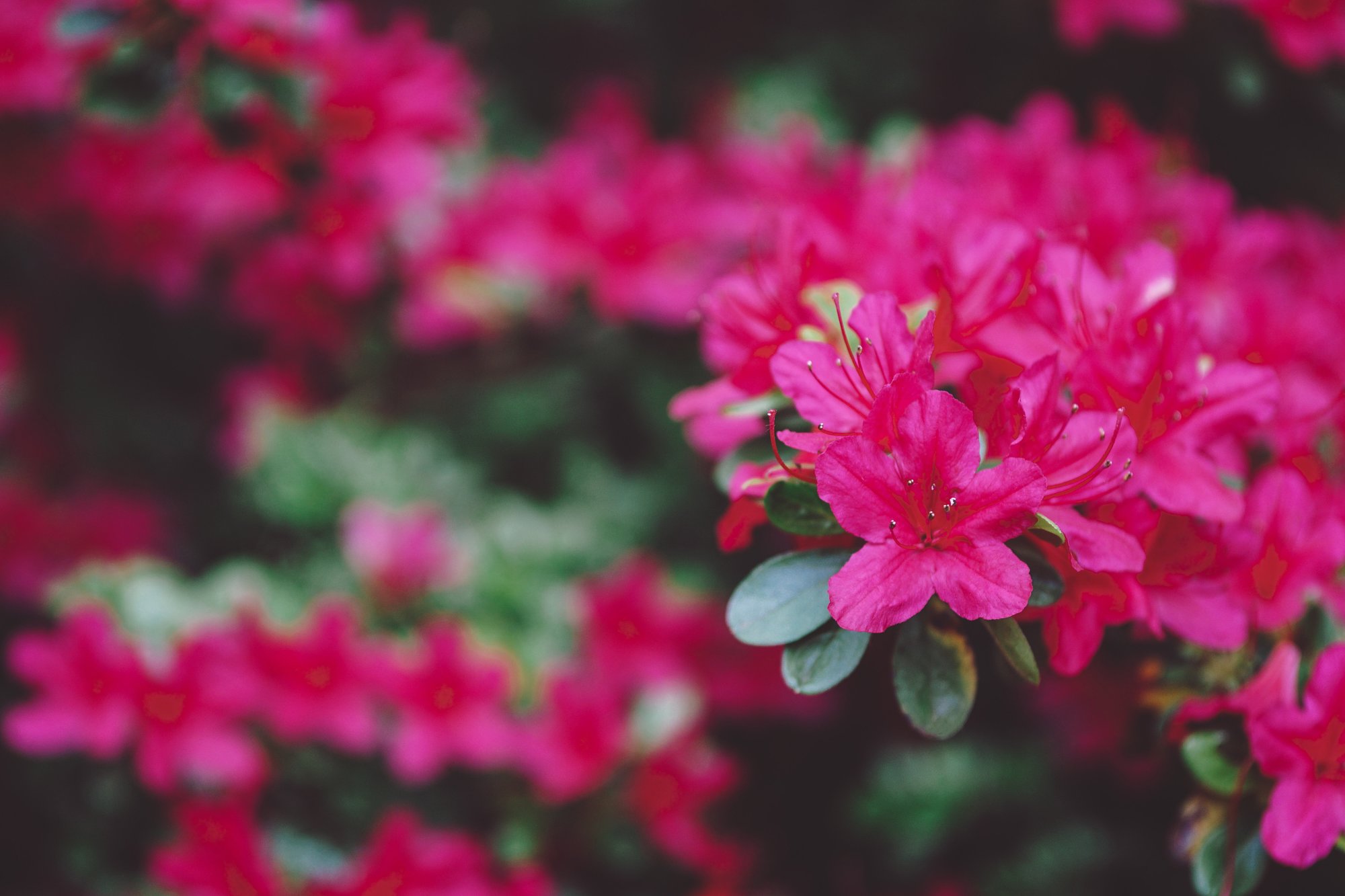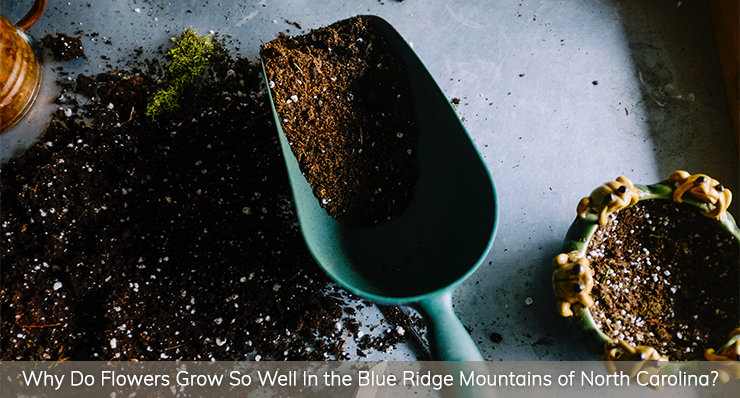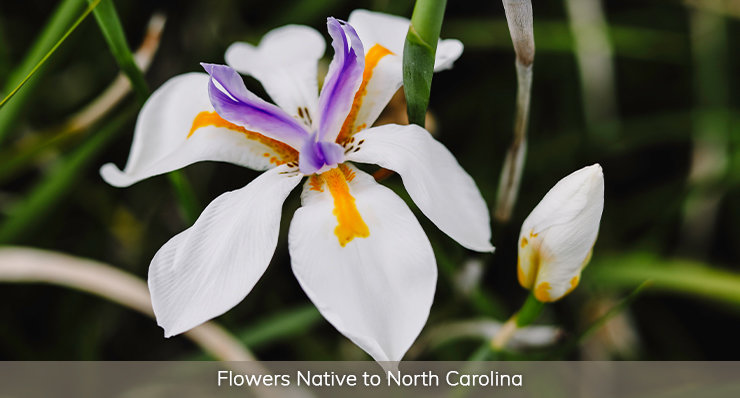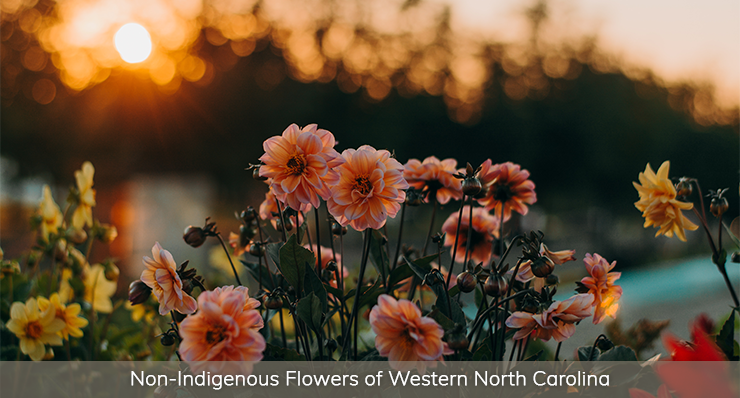
One of the many appealing realities of living in the North Carolina communities of Cashiers, Highlands, Sapphire Valley, Lake Glenville and Lake Toxaway is the abundant and vibrant array of flowers native to North Carolina that decorate the mountain terrain during the spring, summer, and fall months. Add a handful of flowering trees along with a wide variety of non-indigenous blooming plants, and you might believe you are living amongst a botanical garden in your own backyard of the Blue Ridge Mountains.
Why Do Flowers Grow So Well in the Blue Ridge Mountains of Western North Carolina?

It seems that a good majority of the year, a multitude of flowers bloom in succession from one to the next. From spring’s bright and dazzling yellow hues of the daffodil to the late fall blossoms of the highly coveted hydrangea, no matter where or when you look you’re sure to find a bountiful and blossoming array of native plant species alongside transplants growing in the wild. So, what is it about this special geographic region that makes flowers indigenous to North Carolina so happy? Three things in particular: soil diversity, climate and well-drained ground earth.
Soil Diversity
Western North Carolina is considered by many to host the most ancient mountain ranges in the world, the Appalachians. With these aging mammoths comprising our geographic foundation comes the natural erosion and breakdown of minerals, granite, limestone, sandstone and other key sediments. These components make for a rich and diverse base of earth which lends itself to the nourishment and food source of North Carolina’s native plants.
Climate
Set in the southernmost part of the Blue Ridge Mountains lies the Appalachian temperate rainforest. One of only two such climates in North America, the region is dominated by moisture in various forms. Rainfall, fog, humidity, rivers, lakes and waterfalls persist amongst cool and moderate temperatures. This rare combination of elements provides a consistent growing environment year-round.
Well-drained Earth
The topography of the Western North Carolina mountains is primarily composed of rock in its many forms. Topsoil sits on top of granite, limestone, sandstone and other hard minerals, which allows for easy drainage. This natural irrigation system encourages the aeration and development for plants and trees, and generally allows for glorious and plentiful blooms.
Flowers Native to North Carolina

Now that we know the “why” of what makes flowers native to North Carolina so brilliant, let’s discuss some of their more popular varieties.
Wood Anemone in North Carolina (Anemone Quinquefolia)
We’re starting this list of native plants with a widely known wildflower, the wood anemone. Also known as thimbleweed, this sprawling herb likes plenty of shade and is one of the first species to bloom in the spring. Donning a precious white flower, the wood anemone is delicate, yet pervasive along the mountainside territory.
Crested Iris in North Carolina (Iris Cristata)
Arguably, one of the most beautiful perennials native to North Carolina is the crested iris. Showing off with its lavender petals, complemented with golden crown centers, the crested iris is one-of-a-kind. And though these beauties are relatively small, measuring under a foot, they do group together, creating a broad area of coverage, if desired.
Swamp Milkweed in North Carolina (Asclepias Incarnata)
If local birds and butterflies had to pick their favorite flowers native to North Carolina, the swamp milkweed would be at the top of the list. Particularly, for the monarch butterfly. The swamp milkweed is integral to the monarch’s development process and is the sole host plant for the creature during its larval state. Additionally, hummingbirds prefer the blooms of this perennial because of its sweet nectar. Anyone interested in gardening with native plants will definitely want to add this variety to their list.
Rhododendron in North Carolina (Rhododendron Maximum)
Undoubtedly, the most recognizable native plant amongst the Western North Carolina mountains is the rhododendron. These large scale plants can reach heights of over 30 feet and have a tendency to flourish in the mountainous climate and terrain. So popular are these plants with their large pink blooms, that rhododendron festivals have been established around the North Carolina State. A little known fact is that the prevalent flame azalea, found just about everywhere during the spring and summer months, is actually a variety of rhododendron.
Wild Ginger (Asarum Canadense)
Unlike its culinary form, wild ginger is not purposed for cooking, but instead as a popular ground cover plant. The attractive heart-shaped dark green leaves sprawl and can provide protection for the ground, while looking nice. When in bloom, the tiny bell flowers of the wild ginger are hidden and barely recognizable, yet dainty and unique.
Galax (Galax Urceolata)
You may not recognize it by name, but if you’ve received or sent a bouquet of flowers recently, this plant most likely made an appearance. Galax is a highly desired “filler” plant used in the floral industry. Due to its waxy leaves and lifespan of weeks, sometimes months, this highly desired plant has become regulated by the State of North Carolina to avoid over-harvesting.
Trillium
There are several varieties of trillium and some say there are as many as 15 in the Blue Ridge Mountains. Some of them are the wake robin, painted trillium, Catesby’s trillium, large flowered trillium and toad shade. Though they are varied, all trillium are recognizable by their three large leaves sitting just under each bloom. These very pretty wildflowers cover the forest floor and also usually follow streams and rivers.
Non-Indigenous Flowers of Western North Carolina

We’d be remiss discussing common flowers in North Carolina if we didn’t include some non-indigenous favorites.
Dahlias (Dahlia Variabilis)
These full sun loving plants deliver the most coveted blooms on the mountain, and perhaps anywhere else around! Offering a full spectrum of colors with large and interesting petals, the dahlia is king when it comes to variety. Locals gather every year for the Highlands Dahlia Festival and compete for the prettiest flower.
Hydrangea (Hydrangea Serrata)
The hydrangea was originally believed to have hailed from Asia, though recent discoveries have dated these large blooming beauties to ancient America. Perhaps a relationship to our ancient mountains? Regardless, we’re delighted to have these big and brilliant beauties amongst us. Varying in size, but with a capacity to reach over 30 feet, the blossoms on the hydrangea can range in color from a simple white to pink, periwinkle and even maroon.
Landmark Realty Group Loves Flowers Native to North Carolina
It’s easy to see how flowers native to North Carolina brighten and beautify local real estate. And with so many options, it’s easy to find native plants just about anywhere, on any property. Whether you have a skillfully trained green thumb, or you’re just beginning your gardening experience, real estate on the plateau offers unlimited floral possibilities. Our Landmark real estate agents are experts at identifying flowers native to North Carolina and love sharing their favorites with their customers. Whether it’s a rhododendron, trillium or dahlia, they’ll be sure to point out the gorgeous blooms surrounding your real estate prospects. We ask you to join us in our love for flowers native to North Carolina while also discovering your dream mountain home. Great views, waterfalls, cool temperatures, rivers, lakes and flowers? Who could ask for more?
Written By: Dale Gordon
Posted by Landmark Concierge on
Leave A Comment